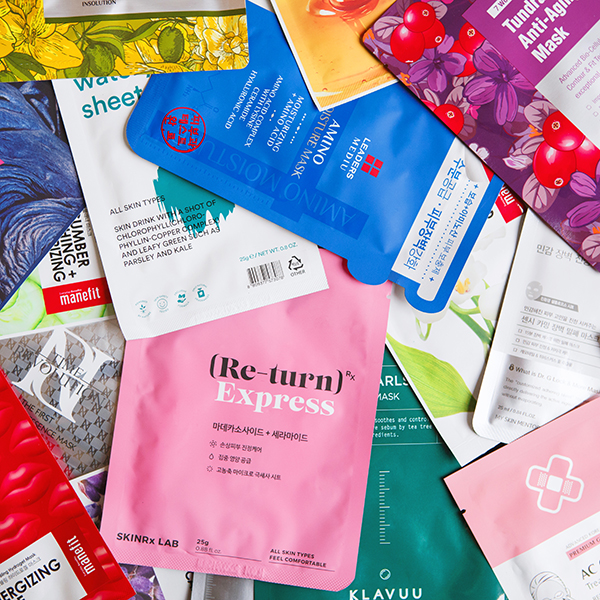Is there really a difference between a $2 and $6 sheet mask? What about a $20 mask? Allow the skin care chemists behind Instagram account Chemist Confessions to explain.
Six dollars is not a lot of money to spend on a lipstick, a cleanser, or a mascara. But on a single-use sheet mask? It can feel like a fortune. Especially when there are so many options for half the price. We can’t even imagine spending $20 on a sheet (we’re looking at you, Skinceuticals).
So why do some sheet masks cost double or triple the price of others? Are they really THAT different? To help us answer this question – which we imagine many of you have had in the skin care aisle – we consulted with Victoria Fu and Gloria Lu, the two skin care chemists behind the popular blog and Instagram account, Chemist Confessions.
Read on to hear what they had to say about the difference between hydrogel and fiber sheet masks, the best ingredients to look for, and more.
Material Matters…
According to Victoria and Gloria, the main reason one sheet mask costs $2 and another costs $6 or more is the material. A thin mask made of a fiber like cotton is likely not going to cling to skin as well or stay saturated as long as a hydrogel or bio-cellulose mask, which is why the latter materials can drive up the price.
“Hydrogel and bio-cellulose substrates have the ability to hold on to so much water, making them great hydrators and they can even soothe sensitive skin,” says Victoria.
Gloria adds, “If you use a mask that practically feels dry after five minutes, it’s not really giving you the super-soaking benefits that these masks are supposed to have.”
…But Active Ingredients Likely Don’t
There are sheet masks for every skin concern from dryness to redness to wrinkles, but if you’ve tried an assortment and feel like they all kind of provide similiar results, you’re probably right.
“Some sheet masks do include solid ingredients like niacinamide and even retinol,” says Gloria, however she notes that they are often incorporated in much lower levels than they would be in a serum. Plus, “in order to get true efficacy from these ingredients, you should use them multiple times a week, which can get pretty expensive pretty quick with sheet masks.”
The takeaway here? “We consider sheet masks as a treat that can deeply hydrate and relieve stressed skin, but wouldn’t take anti-aging or actives claims too seriously,” says Gloria.
RELATED: When to Splurge (And When to Save!) on Your Skin Care Routine
That being said. there are some hydrating, soothing, and cleansing ingredients worth looking out for if you want to get the most bang for your buck.
For an ultra-hydrating mask, Victoria recommends choosing one that contains ingredients like glycols, hyaluronic acid, glycerin, and panthenol. For soothing benefits, Victoria likes allantoin and chamomile, and the bio-cellulose material, and to purify the skin, she suggests charcoals, clays, and perfluorocarbons.
An ingredient to avoid if possible is any type of alcohol. “Sometimes it’s added to give that cooling, refreshing feeling but can be drying for dry skin types,” says Victoria.
Bottom Line
So how much should you actually spend on a sheet mask? “It really comes down to user experience, budget, and how often you want to mask,” says Victoria.
While they do suggest hydrogel and bio-cellulose masks for best results, they don’t suggest paying more than $8 for them. If you do have your eye on a sheet mask in the $6 to $15 range, it’s usually a better deal to buy in bulk.
And as for those around the $20 mark? They can be a great gift or #treatyourself moment, but likely aren’t worth the price. “I was once gifted the $20 AmorePacific Luminous Effect Brightening Masque,” says Victoria. “It was really nice but there are better ways to get brightening actives for a fraction of the cost.”
